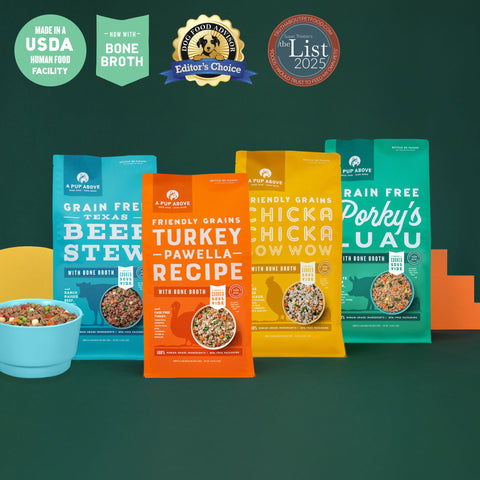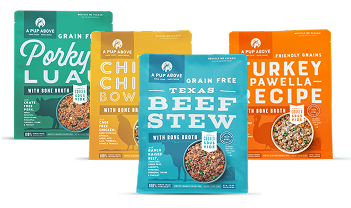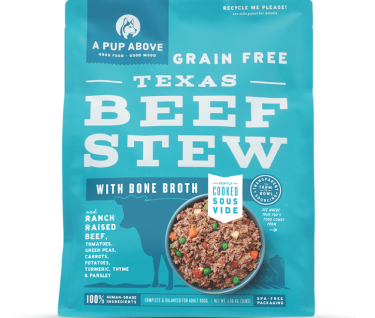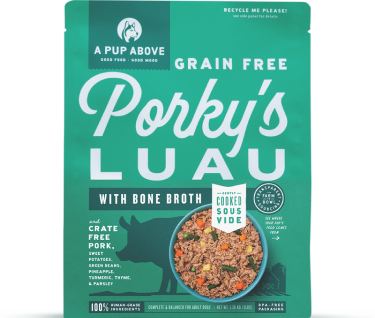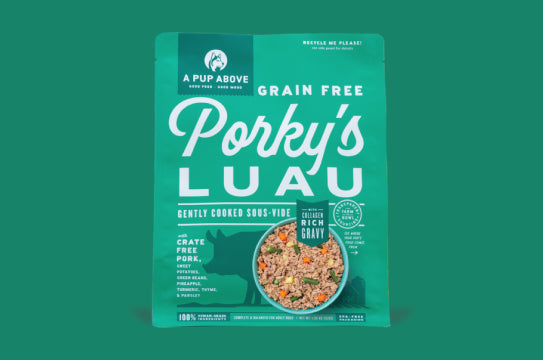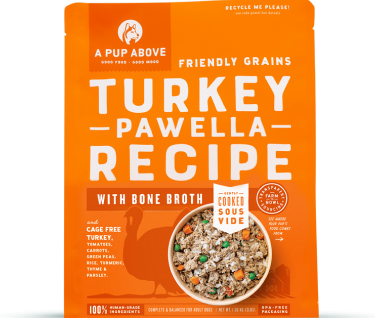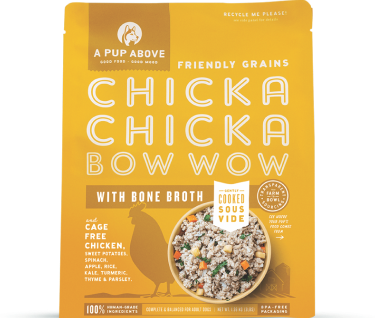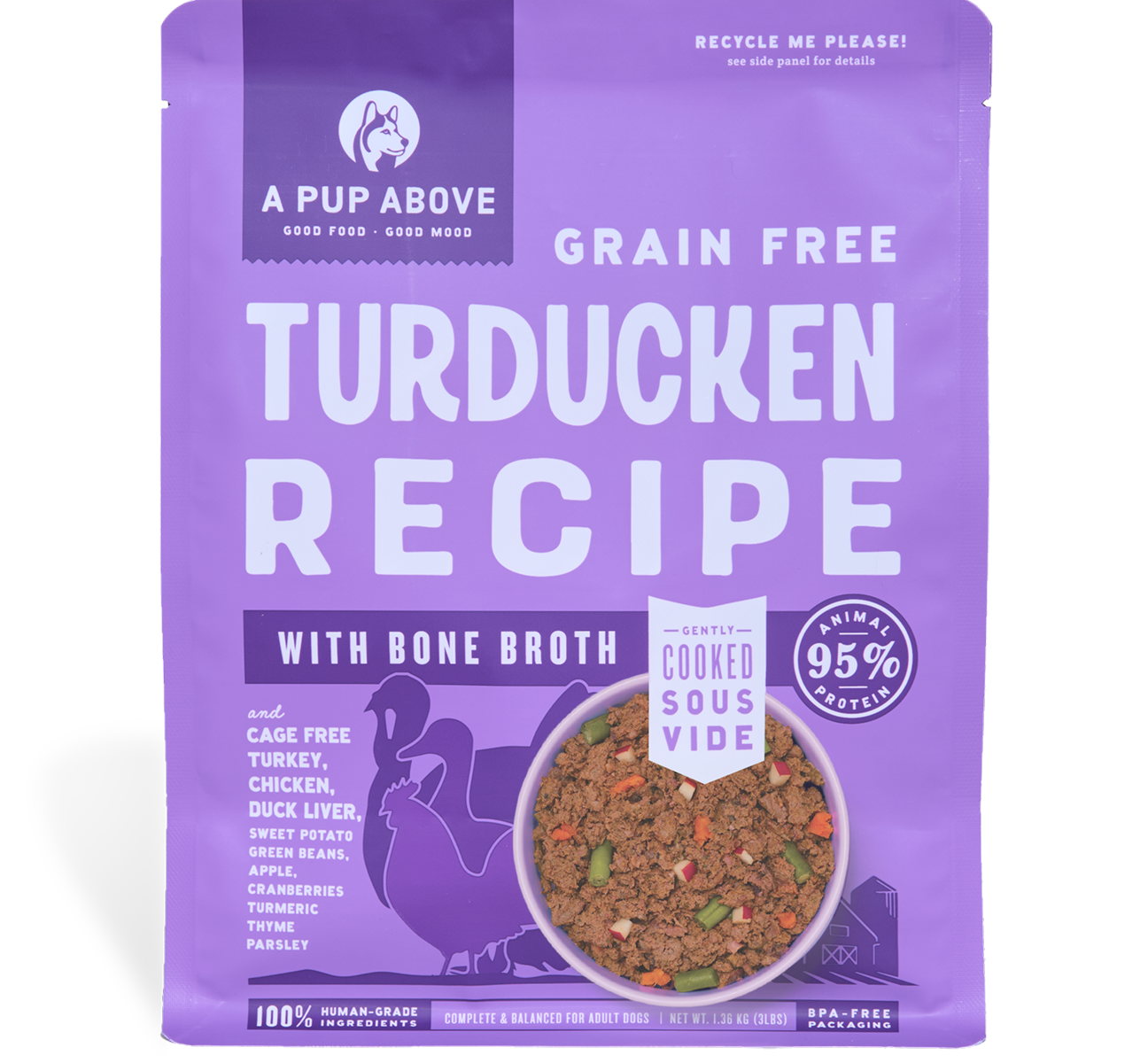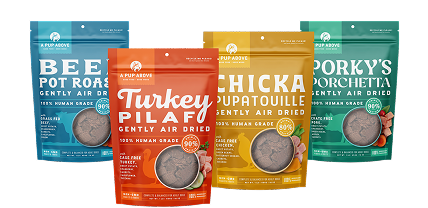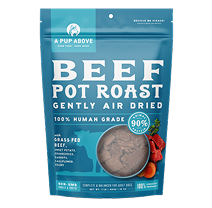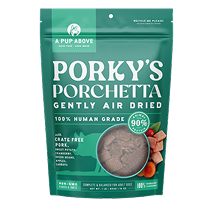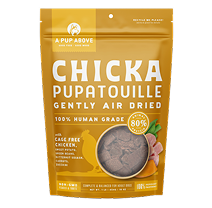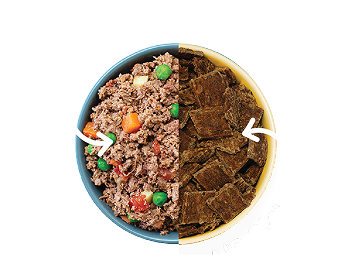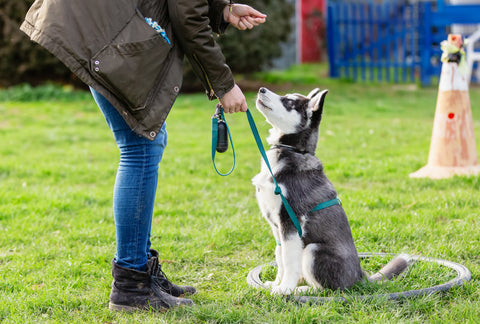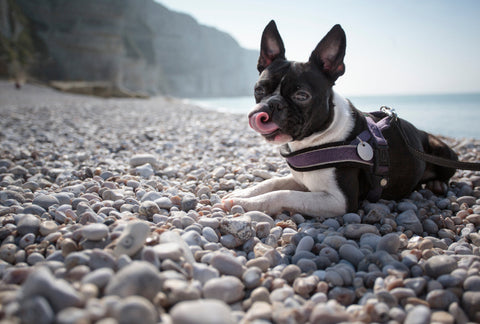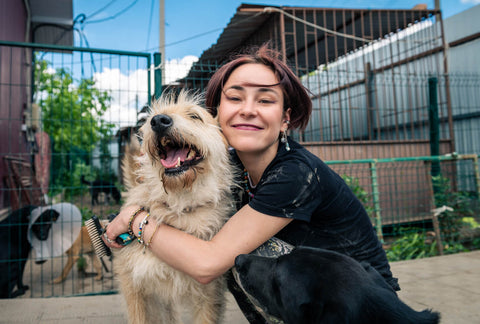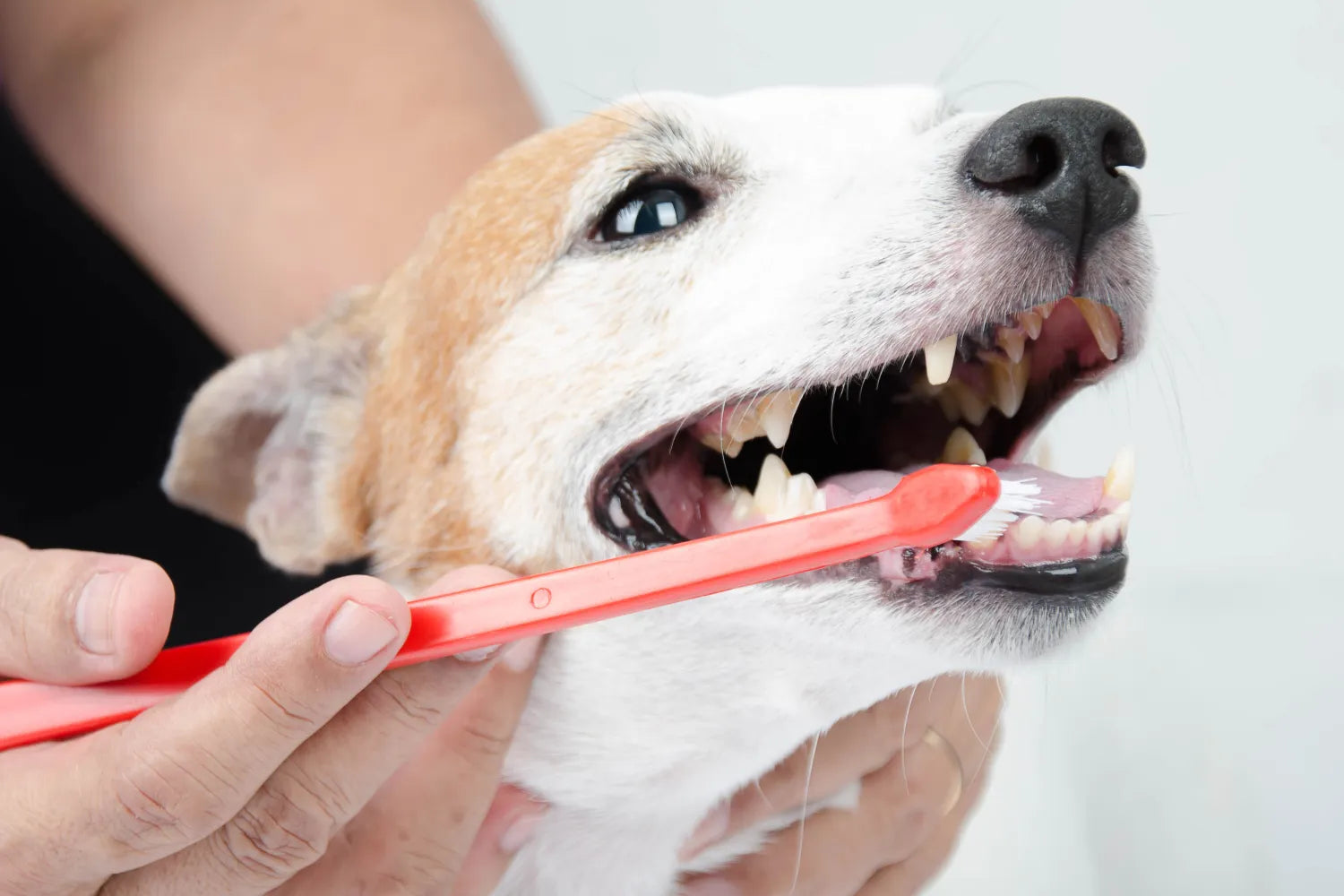
How & Why To Brush Your Dog’s Teeth
Table of Contents
- Why Is It Important To Clean Your Dog’s Teeth?
- Step-by-Step Instructions To Brush Your Dog’s Teeth (and What You’ll Need)
- Are Certain Dog Foods Worse for Plaque Buildup & Bad Breath?
- Can Dental Powders Replace the Need To Brush?
- How Prevalent Is Dental Disease in Dogs?
- When Should I See a Vet About Dental Problems?
- The Bottom Line
Some dogs will let you do just about anything—dress them up, carry them around, even put little booties on their paws. But try to brush their teeth? Suddenly, you’re in a standoff with a creature that once ate an entire sock.
At A Pup Above, we know brushing a dog’s teeth isn’t exactly on the list of fun bonding activities, but here’s the thing—it doesn’t have to be a total struggle. With the right approach (and a little patience), you can make it part of your pup’s routine without turning it into a wrestling match.
Read on to find out why brushing matters, how to do it without a battle, and the best ways to keep those canine chompers clean.
Why Is It Important To Clean Your Dog’s Teeth?
There are plenty of reasons to keep your dog’s teeth clean—some you’d expect and others that might surprise you.
Here are a few of the biggest ones:
Prevent Painful Dental Issues
Dogs aren’t great at telling us when something hurts, and dental pain is easy to miss until it gets really bad. Plaque builds up fast, turning into rock-hard tartar that inflames gums and leads to infections, loose teeth, and a lot of discomfort. Regular brushing helps stop this before it starts so your pup can keep eating, playing, and living pain-free.
Save Yourself a Hefty Vet Bill
Dental problems aren’t just painful for your dog — they’re painful for your wallet. Once plaque turns to tartar, a vet has to remove it under anesthesia, which isn’t cheap. If things get worse, extractions, infections, and other complications can mean even bigger expenses. A few minutes of brushing now saves you a major bill later.
Protect Their Heart, Liver, and Kidneys
Believe it or not, poor dental health doesn’t just stay in the mouth. When bacteria from gum disease enter the bloodstream, they can affect major organs, including the heart, liver, and kidneys. That’s why regular brushing isn’t just about teeth—it’s a simple way to support your dog’s whole-body health.
Keep Mealtime Enjoyable
A dog with sore gums or infected teeth doesn’t want to eat, and that’s a problem. Skipping meals, chewing on just one side, or suddenly refusing crunchy food can all be signs of dental pain. Taking care of their teeth helps ensure they keep enjoying their meals (and treats) without any discomfort.
Step-by-Step Instructions To Brush Your Dog’s Teeth (and What You’ll Need)
After hearing about all the benefits of brushing, you’re probably ready to give it a shot. But if the idea of sticking a toothbrush in your dog’s mouth sounds like a battle waiting to happen, don’t worry.
Here’s exactly what you’ll need and how to make the process as smooth as possible:
- Dog-Safe Toothpaste: Human toothpaste is a no-go (too many toxic ingredients). Get one made for dogs in flavors they actually like (think chicken or peanut butter).
- A Dog Toothbrush or Finger Brush: A soft-bristled toothbrush or a silicone finger brush works best. If your pup is tiny, a baby toothbrush can also do the trick.
- Patience & Treats: A little bribery never hurts. Keep some treats nearby to reward good behavior and make it a positive experience.
Step 1: Get Your Dog Comfortable
Before you even bring out the brush, let your pup sniff and lick the toothpaste so they get used to it. If they’re squirmy, try brushing when they’re tired, like after a walk.
Step 2: Start With Your Finger
Rub a little toothpaste on your finger and gently massage their gums. This helps them get used to the sensation before introducing the toothbrush.
Step 3: Introduce the Toothbrush
Once they’re comfortable, apply toothpaste to the brush and start with the front teeth. Use small, circular motions and work your way back. Focus on the outer surfaces—most dogs won’t let you brush the insides (and that’s okay).
Step 4: Keep It Short & Sweet
You don’t need to get every tooth in one go. Start with just a few seconds and build up over time. The goal is consistency, not perfection.
Step 5: Reward & Repeat
Finish with praise and a treat. Brushing a few times a week is great, but daily is ideal. The more positive you make it, the easier it’ll get.
Are Certain Dog Foods Worse for Plaque Buildup & Bad Breath?
Wondering if what your dog eats has anything to do with their breath (or lack of pearly whites)? Spoiler: it absolutely does. Some foods can contribute to plaque buildup and bad breath, while others help support a cleaner, healthier mouth.
The Truth About Kibble & Dental Health
One of the biggest myths out there is that kibble helps clean your dog’s teeth. We get why it sounds good in theory — crunchy food scraping off plaque, right? But in reality, it’s more like thinking potato chips clean your teeth. Kibble breaks apart too quickly to do much good, and starchy fillers can actually stick to teeth, feeding the bacteria that cause plaque and bad breath.
What To Look for in a Diet That Supports Oral Health
A fresh, whole-food diet is one of the best ways to support your dog’s dental health. Nutrient-dense, moisture-rich meals like our Texas Beef Stew and Turkey Pawella contain real ingredients that naturally support gum health without all the unnecessary fillers that can make plaque worse.
Here’s what matters:
- High-Quality Protein: Keeps teeth strong and helps prevent inflammation in the gums.
- Minimal Starches & Fillers: Less junk means fewer sugars feeding bad bacteria.
- Moisture-Rich Ingredients: Helps wash away food particles instead of leaving behind residue.
- Superfoods Like Parsley & Thyme: Naturally freshen breath and support overall oral health.
At A Pup Above, we make real food for dogs — sous-vide cooked to lock in nutrients without unnecessary fillers. So, if your pup’s breath could clear a room, it might be time to rethink what’s in their bowl.
Can Dental Powders Replace the Need To Brush?
Dental powders are a popular option for keeping your dog’s teeth clean without the struggle of brushing. They’re usually made with natural ingredients like seaweed or enzymes that help break down plaque and freshen their breath. You just sprinkle a little on your dog’s food, and it gets to work as they eat.
Sounds easy, right? While dental powders can help reduce plaque buildup, they’re not a total replacement for brushing. Think of them as a solid backup plan—not the main routine.
They work best when used alongside regular brushing, chews, and a good diet. If your dog absolutely refuses a toothbrush, adding a high-quality dental powder is better than doing nothing at all, but for the best results, a mix of approaches will keep their mouth healthiest in the long run.
How Prevalent Is Dental Disease in Dogs?
Dental issues are one of the most common health problems in dogs. Studies show that by age three, around 80% of dogs already have some form of dental disease. That means if you’re not actively keeping your pup’s teeth clean, plaque and tartar are probably creeping in.
Early signs of dental trouble include bad breath, yellowing teeth, and red or swollen gums. If left untreated, these can turn into more serious issues like infections, tooth loss, and even problems that affect the heart, kidneys, and liver.
The good news? Prevention is much easier (and cheaper) than treatment. Keeping up with daily care, feeding them the right foods, and staying on top of vet visits can help keep their teeth in top shape before bigger issues pop up.
When Should I See a Vet About Dental Problems?
If your dog’s breath is consistently awful, their teeth look more yellow than white, or they’re avoiding their food, it’s time for a vet visit. These can all be signs of more serious dental issues, like infections or gum disease, that need professional care.
Routine cleanings help remove built-up plaque in ways that brushing at home just can’t. If your vet recommends one, it’s worth doing, especially if your dog already has signs of dental disease. And if you ever notice excessive drooling, pawing at the mouth, or a sudden change in eating habits, don’t wait—those could be signs of pain or infection that need attention ASAP.
The Bottom Line
And there you have it—everything you need to know about keeping your pup’s teeth in top shape. At A Pup Above, we’re all about making it easier to give your dog real, nutritious food that supports their whole-body health, including their teeth.
Whether you opt for our fresh food or dry food, a good diet goes a long way in keeping those chompers clean. Pair it with regular brushing, and you’ve got a recipe for a healthier, happier pup.
Ready to give your dog the gift of health? Dive into our delicious, nutrient-packed options and see the difference for yourself. Let's keep those tails wagging and those teeth sparkling!
Sources:
How to Brush Your Dog's Teeth and Why It's So Important | AKC
Periodontal disease | Cornell University College of Veterinary Medicine
How Dog Dental Powders Help Target Bad Breath and Yellow Teeth | American Kennel Club
Top Stories
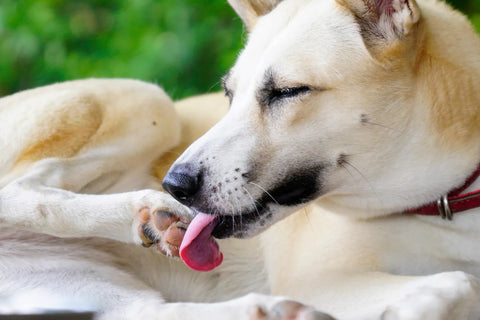
Why Do Dogs Lick Their Paws?

Why Do Dogs Whimper & Make Noises in Their Sleep?
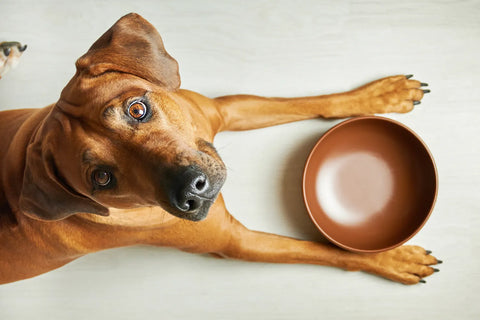
Healthy Vet-Approved Homemade Dog Food Recipes
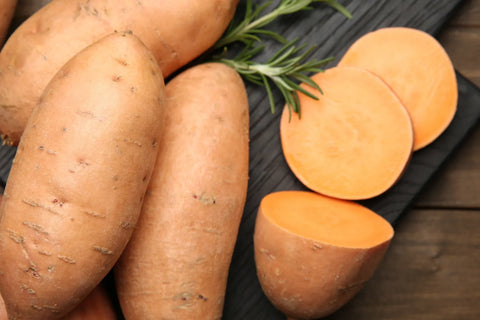
How To Cook Sweet Potatoes for Dogs
